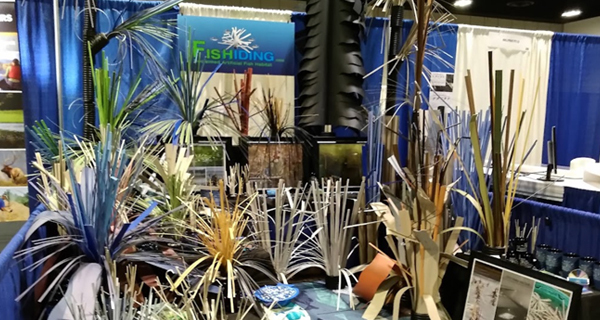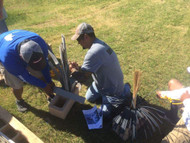Creating Homemade Fish Habitat for Ponds
Posted by David Ewald on 12th Mar 2024
Ponds are serene fish havens, teeming with life and offering a peaceful retreat for both humans and wildlife alike. For pond owners seeking to enhance their aquatic ecosystems, building a homemade fish habitat can be a fulfilling endeavor. By providing shelter and sustenance for fish, these habitats contribute to the overall health and balance of the pond environment. In this guide, we’ll explore the steps and considerations involved in crafting a homemade fish habitat for ponds.
Understanding the Importance of Fish Habitats:
Before delving into the homemade fish attractor construction process, it’s crucial to understand the significance of fish habitats within pond ecosystems. Fish rely on artificial fish habitats for shelter, breeding, and foraging. A well-designed fish habitat not only supports fish populations, but also promotes biodiversity by attracting various aquatic organisms, zooplankton and periphyton to name a few.
Selecting an Ideal Location:
Choosing the right location for your fish habitat is the first step towards success. Choose areas with moderate water depth and ample sunlight penetration. Avoid placing the habitat in areas prone to strong currents or where it might interfere with other pond activities.
Materials Needed
Constructing a homemade fish habitat requires minimal materials, many of which can be easily sourced:
1. PVC pipes or bamboo poles, PVC from Fishiding.com
2. Concrete blocks or large rocks
3. Natural vegetation such as brush, branches, or aquatic plants
4. Twine or zip ties for securing materials
Building the Habitat
1. Assembling the Framework: Begin by laying out the foundation of your fish habitat using cement, PVC pipes or bamboo poles. Arrange them in a grid-like pattern to create a sturdy framework. Any way you select.
2. Adding Fish Structure: Incorporate concrete blocks or large rocks to provide weight and stability to the habitat. Stack them strategically within the framework to create hiding spots and underwater caves for fish.
3. Integrating Natural Elements: Enhance the habitat by introducing natural vegetation such as brush, branches, or aquatic plants. These elements not only mimic natural habitats but also serve as breeding grounds and foraging areas for fish.
4. Securing the Habitat: Use cement to secure the materials in place and prevent them from shifting or floating away. Ensure that the habitat is securely anchored to the pond floor to withstand water currents and weather conditions.
5. Creating Diversity: Incorporate a variety of textures and structures within the habitat to accommodate different fish species. Consider adding hollow logs, clay pots, or artificial reefs to diversify the underwater landscape.
Maintaining Your Habitat:
Building a homemade fish habitat is just the beginning; proper maintenance is essential for its long-term sustainability. Here are some tips for maintaining your safe haven of fish habitat:
1. Regular Inspection: Periodically inspect the fish tree habitat for signs of wear and tear, and make necessary repairs or adjustments as needed.
2. Vegetation Management: Monitor the growth of vegetation within the aquatic fish habitat and trim or remove any overgrown plants that may obstruct fish movement or water flow to suit your needs.
3. Water Quality Management: Maintain optimal water quality by monitoring pH levels, oxygen levels, and nutrient concentrations. Proper aeration and filtration systems can help ensure a healthy pond environment for fish.
4. Fish Population Control: Keep a balanced fish population to prevent overcrowding and competition for resources. Consider implementing catch-and-release practices or stocking the pond with native fish species.
5. Seasonal Considerations: Adapt the manmade fish habitat to seasonal changes by adjusting vegetation, adding supplementary food sources, and providing additional shelter during extreme weather conditions.
Building a homemade fish habitatis a rewarding endeavor that fosters the well-being of pond ecosystems and enhances the overall beauty of the landscape. By incorporating natural elements and thoughtful design, pond owners can create thriving fish habitats that support diverse fish populations and promote ecological balance. With proper maintenance and care, a homemade fish habitat can be enjoyed for years to come, enriching the lives of both humans and aquatic inhabitants alike.



